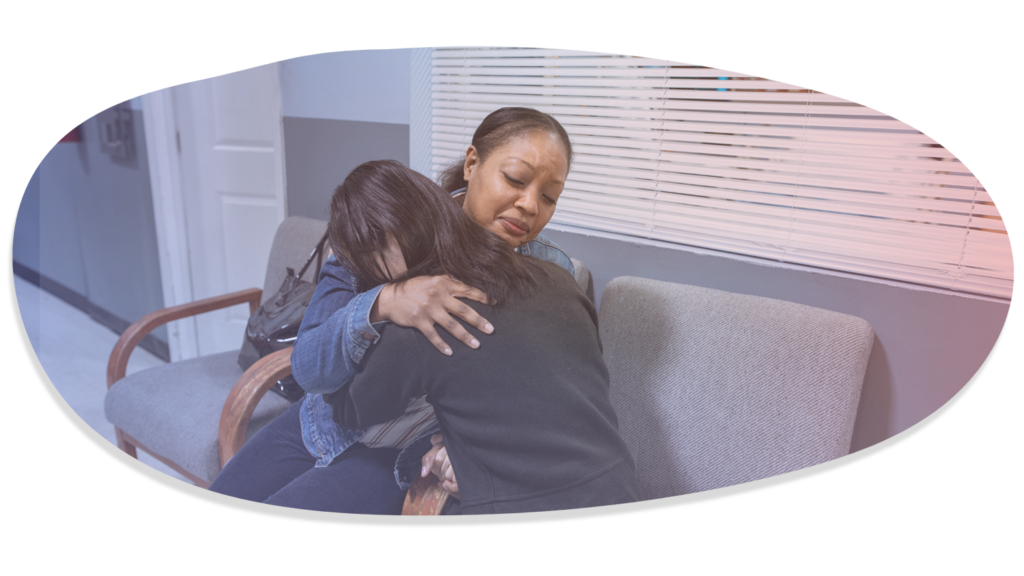After a sexual assault, there is a social script that dictates what many people think would be “normal” activity. There are usually some variations in this. It can include the survivor fighting back during the assault. It could also say the survivor should cut ties with the perpetrator immediately afterward if they know each other (which they usually do). Or that all survivors get examined at a hospital for their Sexual Assault Evidence Kit as soon as possible. There is also an expectation that all these steps are done logically. The survivor “must” also never doubt that the assault itself occurred. But these are not always examples of common reactions to sexual assault.

We will look deeper into how unrecognized sexual assaults can lead to cycles of abuse for vulnerable peoples in a later article. However, in today’s post, we will explore how rape myths and rape culture make valid responses by survivors seem unusual.
This article is adapted from the Women’s College Hospital’s online course. For more information, complete Understanding the Commonly Misunderstood Reactions to Sexual Assault.
Normalization
Normalization happens when a survivor tries to put the assault into the context of what is considered “normal” activities. This idea of “normal” is usually fueled by rape culture, which hides the fact that a sexual assault legitimately happened. This can be made worse when the survivor knows the perpetrator, which they do in the majority of cases. Some research says this is because people in intimate relationships believe sex is “expected“. Plus, social scripts usually tell us that sexual assaults are committed by strangers. So, when the perpetrator is known to the survivor, then it might not fit their idea of what a sexual assault “should” be.
Examples of common reactions to sexual assault: Normalization
- “Guys can’t control themselves when they want to have sex.”
- “My friends have all told me their partners push their boundaries too.”
- “Everyone knows girls can’t sexually assault a guy.”
Explanation
Explanation is when a survivor tries to rationalize what happened to them and explain away the assault. This can happen especially when there is an existing relationship between the survivor and the perpetrator. Explanations are usually fueled by rape myths and grounded in rape culture.
Examples of common reactions to sexual assault: Explanation
- “He was drunk and didn’t realize what he was doing.”
- “Even though I said no, I didn’t push them off or fight back.”
- “I was hard so I must have wanted to have sex.”
Minimization
When a survivor uses minimization, they usually refer to another situation that could have been worse. They recognize that they said no and that they didn’t consent, but think about how they might have “gotten off easy” compared to someone else.
Examples of common reactions to sexual assault: Minimization
- “At least I know he’s clean, so I don’t have to worry about STIs.”
- “They didn’t physically hurt me, so it wasn’t that bad.”
- “She said she loved me afterwards, so at least it wasn’t a stranger.”
Dramatization
When a survivor engages in dramatization, they will openly talk about the assault. This might lead others to feel like the assault didn’t affect them, but in reality it’s a part of processing the assault and healing from it. Dramatization could lead the survivor to think that those around them “must be sick of hearing about it”. This can cause feelings of shame. However, connecting with others and being open to talking with helpful people may allow a survivor to bring in the help they need to recover.
Examples of common reactions to sexual assault: Dramatization
- Talking about the assault every time they meet with a specific person.
- Seeming not to be affected by the assault.
- Being open to talking with everyone about their assault.
Suppression
Suppression is the opposite of dramatization. When a survivor suppresses the assault, they try not to think about it. They may do everything they can to keep the memory of the assault out of their mind and disconnect from their supports who might know about the assault. Being able to know how to support and talk with someone who has gone through a sexual assault might be helpful in supporting the survivor in your life.
Examples of common reactions to sexual assault: Suppression
- Refusing to discuss the assault.
- Acting as if the assault never happened.
- Interacting normally with their abuser.
Dissociation/numbing
Dissociation is when a survivor becomes disconnected from their body. They may feel empty, numb, or nothing at all. We’ve described this before as being “a dream-like state”. During dissociation, your brain filters some experiences from consciousness to protect you. This can lead to memory loss, feelings of surreality or detachment.
Examples of common reactions to sexual assault: Dissociation/numbing
- Problems remembering certain events.
- “I feel empty.”
- Not having an emotional reaction to the assault.
Changes in Sexual Activity
Survivors may have changes to their consensual sexual activities after a sexual assault. Some people may engage in more, riskier sex. Others may shut down and not be able to have consensual sex. The whole spectrum represents real, valid responses to sexual assault. Being able to recognize changes to someone’s experience might help them process what has happened.
Examples of common reactions to sexual assault: Changes in Sexual Activity
- Having sex with every partner who proposes it.
- Newfound trust and intimacy problems.
- Any changes that stand out from a survivor’s baseline.
Supporting a survivor with these responses
Recognizing the symptoms of trauma and knowing more about reporting are key pieces to healing after a sexual assault. We’ve recently explored the difficulties a survivor may face in reporting a sexual assault, but there is hope. Traditionally, only approximately 5% of sexual assaults are reported to the police. But now, VESTA Anonymous Reporting and VESTA Online Reporting offer trauma-informed ways for survivors to report their experiences. Survivors can use the tools as a way to document their experience for their own benefit. They can choose to use it to report anonymized statistics to campus or relevant authorities. Or they can submit a full police report.
We hope that one day rape culture will be eradicated. And we are trying to play our role in making that happen. When survivors can be supported to access the resources they need to heal, the system will get more information on how to support them. Since no two survivors are the same, the more information the system has, the better it can support those who come forward. When everyone who is sexually assaulted feels they can come forward, our society can heal itself from the ills of sexual violence. Then, that will be the day where an equal society can emerge and rape culture can be left behind.

